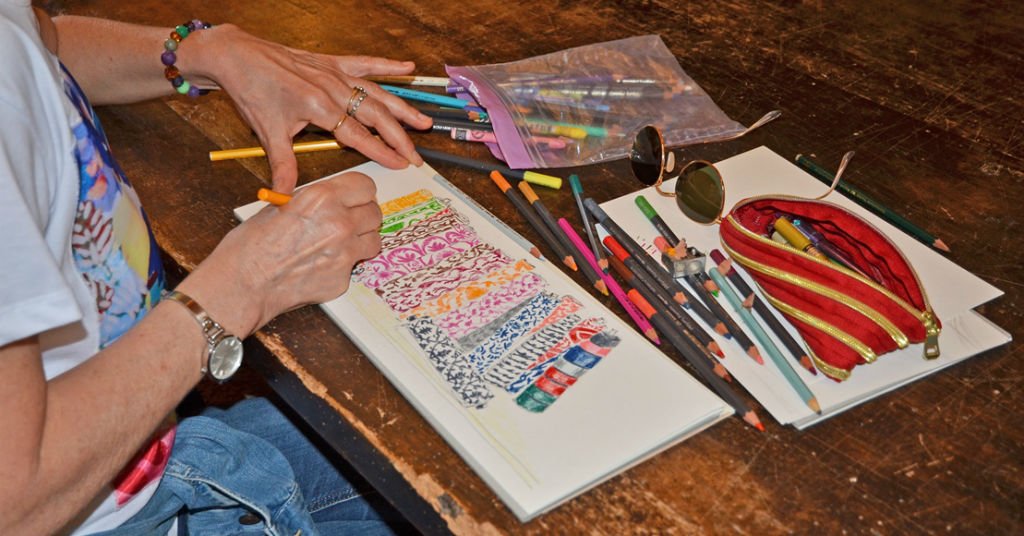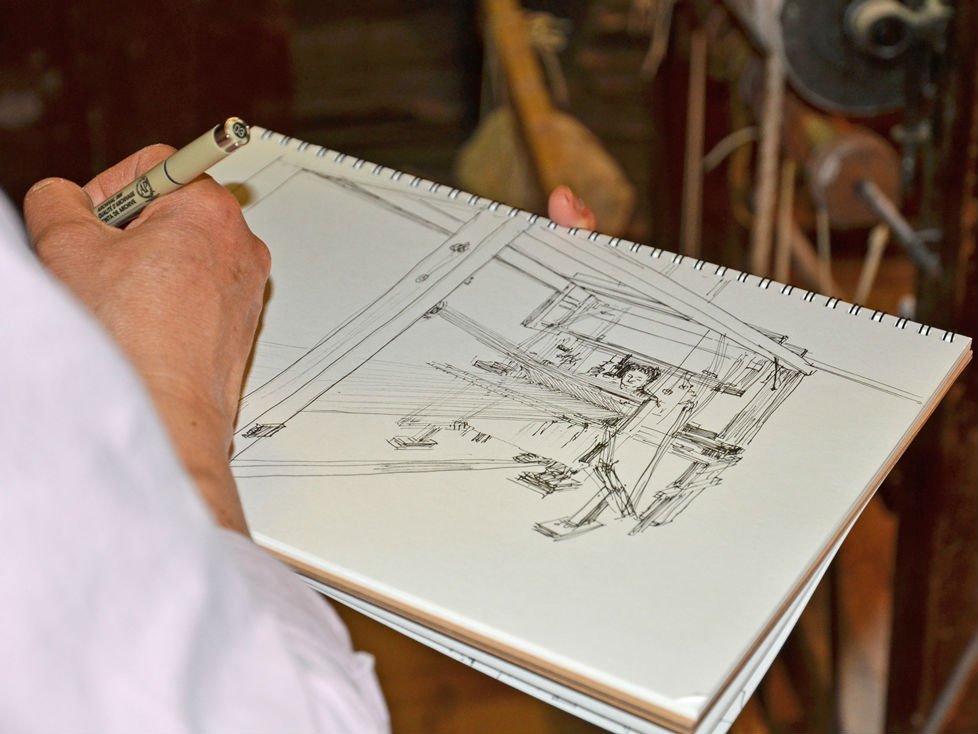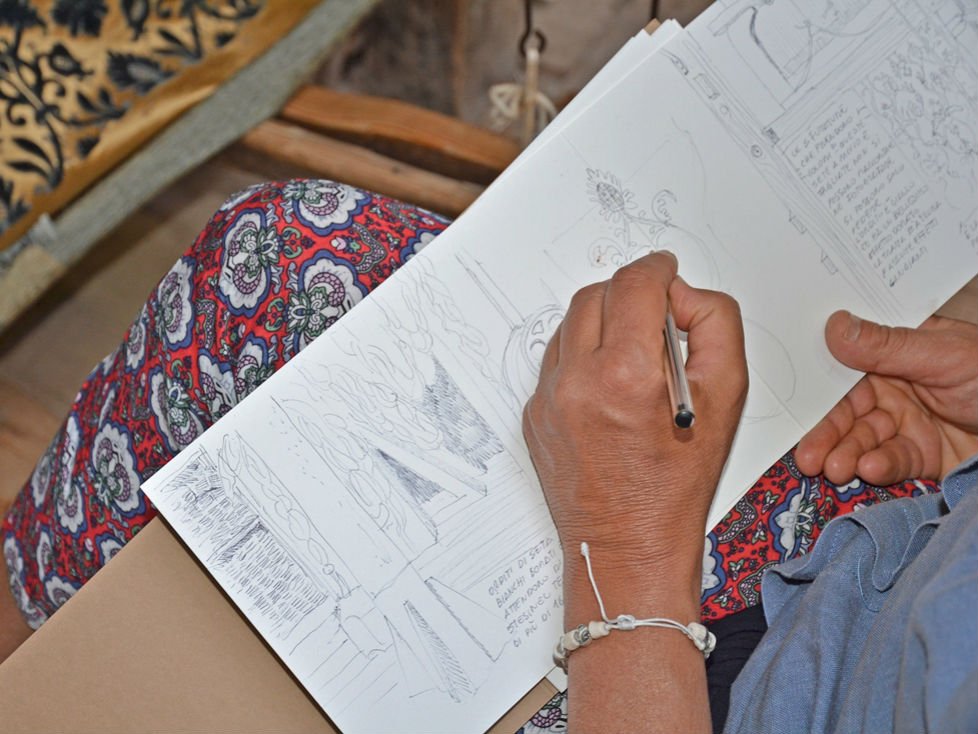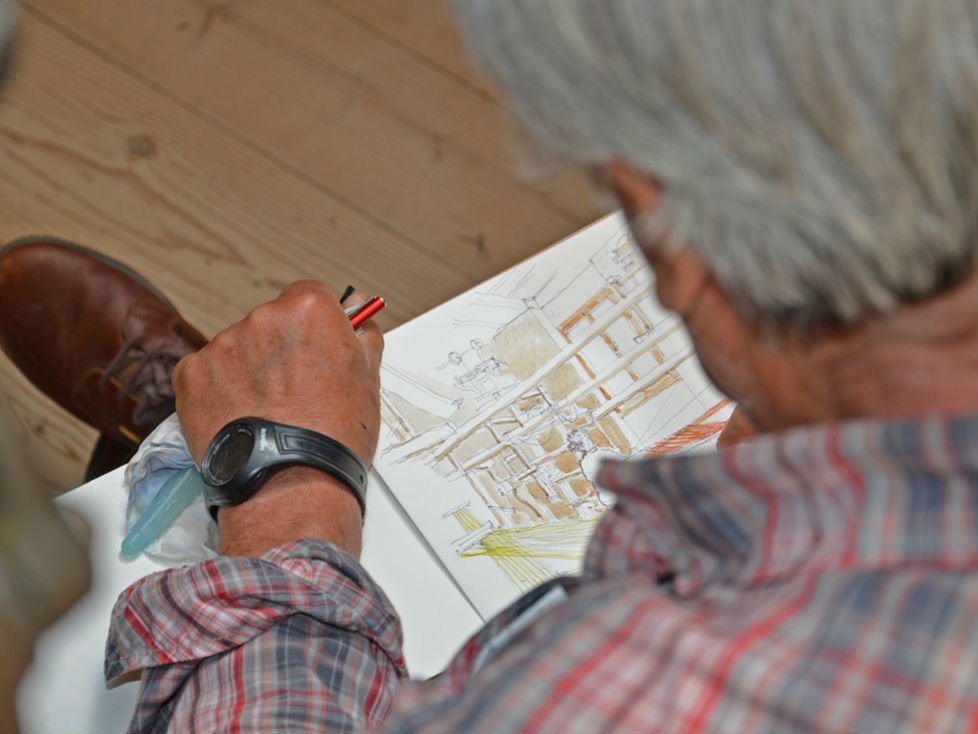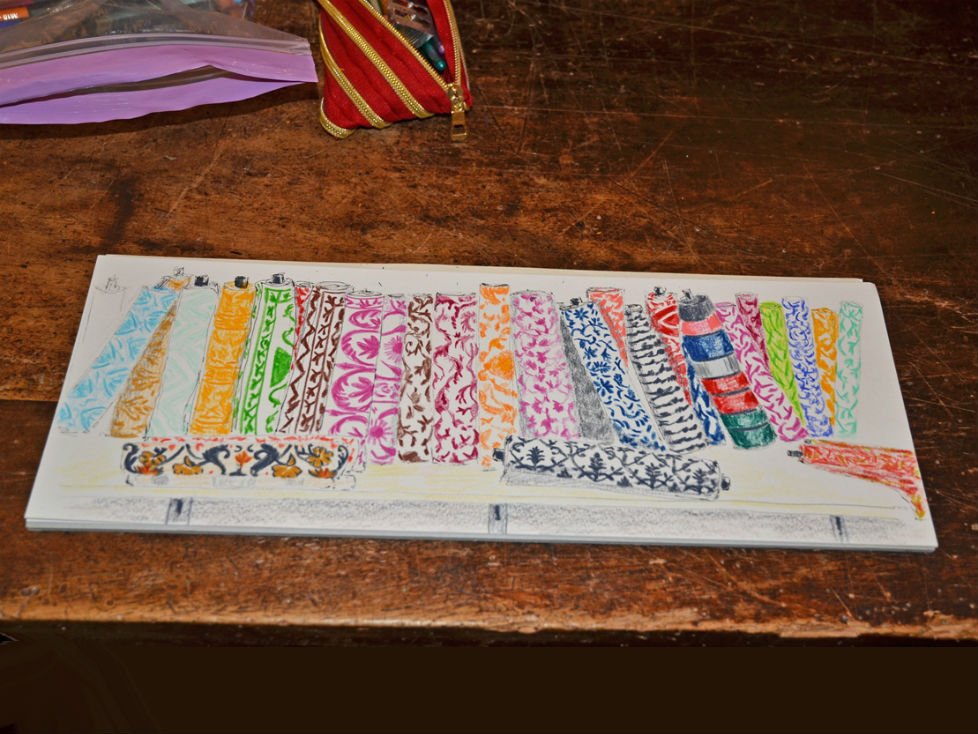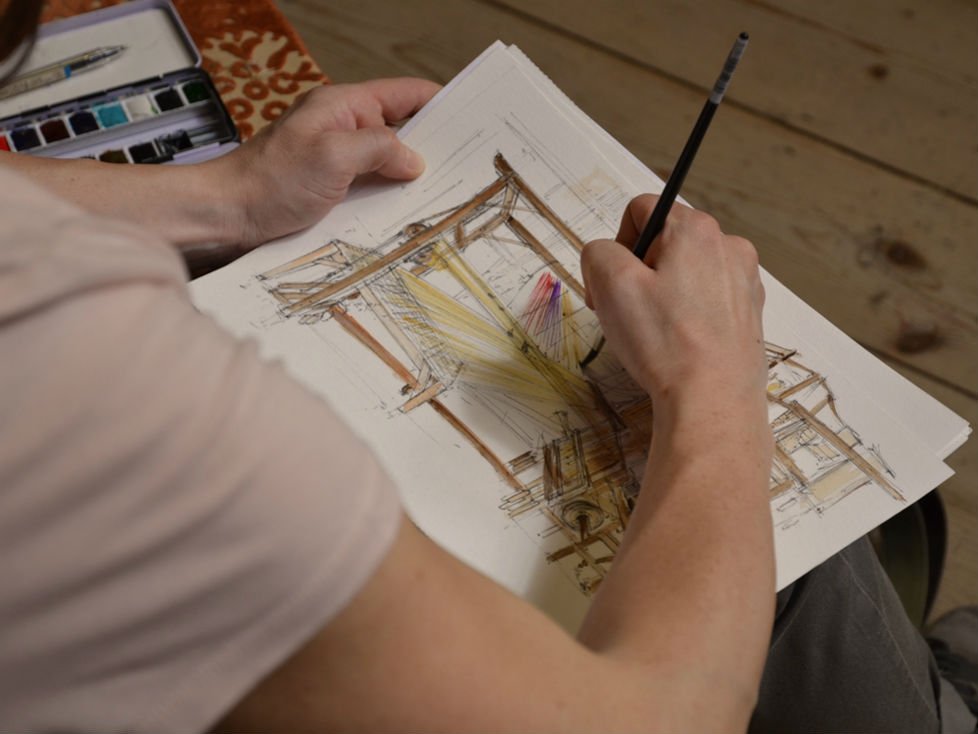Let’s find out what they drew and their impressions. But first of all, we’ll tell you who they are, with the help of Giancarlo Lamberti, the association’s photographer and organizer of the day.
What is Matite in Viaggio and what does it do?
Matite in Viaggio is a cultural association born in 2011, after a visit to the exhibition of the French association il Faut Aller Voir in Clermont-Ferrand. The artists who saw it fell in love with its drawings dedicated to travelling at first sight. Then they started wondering if they should open a similar association in Italy, too. And finally they did it: they created a group of drawing enthusiasts whose aim is communicating their love for travelling through their drawings.
As Giancarlo Lamberti told us, their works are sketches, or watercolours made with rapid strokes. They’re simple, but can convey the emotion they feel when they discover something new, meet new people and visit unknown places.
Their creations fill a “travel carnet”, together with some notes on each drawing. These works, those made by the boys and girls the MIV artists meet in schools and those of more than 80 draughtspeople from all over the world gather in October in Mestre (Venice), on an exhibition which takes place every year.
This is the final destination of the drawings made during MIV’s themed trips. Such as Il mondo vestito (“The dressed world”), which took the group to Venice.
Photos © Giancarlo Lamberti
Il mondo vestito: a journey to discover Venetian fabrics and clothes
“The idea of drawing clothes and fabrics came to us in 2016, when we collaborated with the Atelier Pietro Longhi in Venice and the choreographer Raffaele Dessì. It was an exhibition dedicated to Travel clothing, during which the Atelier displayed two of its dresses, which Dessì described. Next year we decided to explore this subject further”.
So they decided to draw their journey to:
- Tessitura Bevilacqua, a historical producer of luxury fabrics;
- Atelier Pietro Longhi, where clothes from the past come back to life;
- La Fenice Theatre, where one of the highest expressions of music, the opera, brings clothes to the stage.
But why have they chosen these places?
“Tessitura Bevilacqua, Atelier Pietro Longhi and La Fenice Theatre are part of the history of Venice and stand for an ongoing tradition, even if coming from centuries ago”.
Looms and furnishing fabrics drawings by Matite in Viaggio
So on May 12th our workshop filled with the steps of 7 artists and a photographer, Mr Lamberti. After exploring the rooms and the tools our weavers use, they chose the subject they wanted to draw.
The result? You can see it on the photos on this page. But if you want to see it with your own eyes, you can do it in Mestre, in the “Centro Culturale Candiani”, from October 6th to 22nd, during the Matite in Viaggio – Carnets disegni parole.
We’ve asked these artists what they drew and felt in our weaving mill: here’s what they told us.
Choosing what to draw was a bit hard, though: so many subjects! Looms, threads, bobbins, gears, levers, stones and strings: I was spoilt for choice, because all these tools are tokens of the textile manufacturing of the past centuries.
The whole workshop oozes historicalness, a magic completely different from modern technology.
But by biggest difficulty was indeed choosing and depicting the details of these designs!
Deciding what to draw was no piece of cake, after I discovered how many components a loom’s got!
I chose to draw the looms, though, because they’re made of wooden and iron parts which were produced centuries ago. But they keep on bringing into being excellent fabrics, even now, in the age of electronic technology.
With so many details I could draw, I decided to picture some coloured fabrics.
That’s what I appreciated above all the rest: the chance to picture a product, fabrics, which has’t changed over time. So I chose to draw some fabrics and their iridescent colours.

